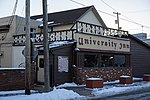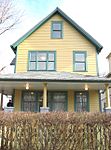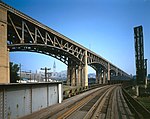Cleveland University
1851 establishments in Ohio1853 disestablishments in OhioAC with 0 elementsDefunct private universities and colleges in OhioEducational institutions disestablished in 1853 ... and 3 more
Educational institutions established in 1851History of ClevelandUniversities and colleges in Cleveland
Cleveland University was a short-lived university in the Tremont neighborhood of Cleveland, Ohio, United States. It was founded in 1851 by Asa Mahan the then-recently resigned president of nearby Oberlin College. (See also William Case.) It is notable for having been the first institution of higher education in the city of Cleveland, and for briefly being a "rival" institution to Oberlin College.
Excerpt from the Wikipedia article Cleveland University (License: CC BY-SA 3.0, Authors).Cleveland University
Thurman Avenue, Cleveland
Geographical coordinates (GPS) Address Nearby Places Show on map
Geographical coordinates (GPS)
| Latitude | Longitude |
|---|---|
| N 41.4804 ° | E -81.6846 ° |
Address
Tremont Lofts
Thurman Avenue
44113 Cleveland
Ohio, United States
Open on Google Maps







